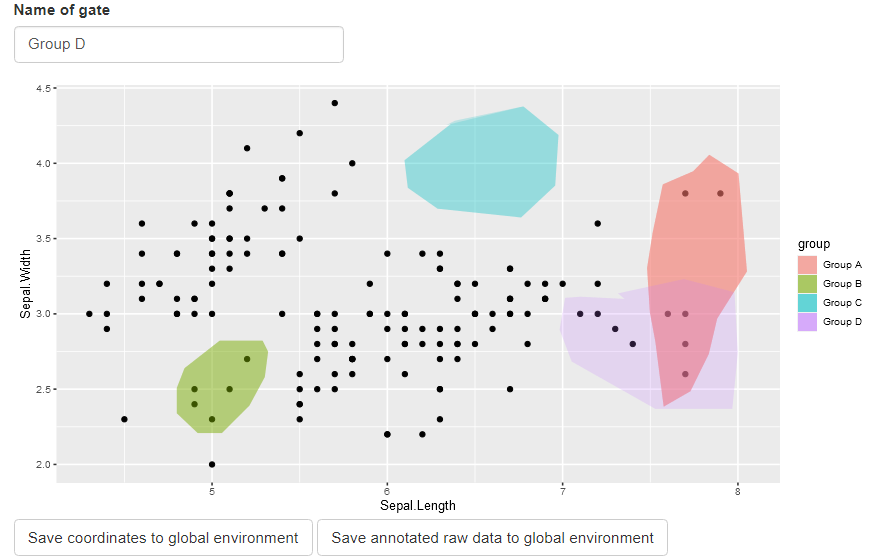ggGate is a one-function-package that enables point-and-click gating on a ggplot2 object through shiny
You can install ggGate from GitHub with:
# install.packages("devtools")
devtools::install_github("northNomad/ggGate")suppressMessages(library(ggGate))
#> Warning: package 'shiny' was built under R version 4.1.2#create ggplot2 object
p <- ggplot(iris, aes(Sepal.Length, Sepal.Width)) + geom_point()
ggGate(p, write_data_to = "df_new", write_gate_to = "df_gate")-
Name the current gate using the Name of gate text box
-
Single-click on plot to create and draw gate
-
Double-click on plot to finish gate
-
Click on action buttons to save gate coordinates and annotated data
New columns corresponding to each gate are added to the data.frame underlying the ggplot2 object.
The new columns store boolean values indicating if the data points (rows) fall inside the respective gates.
colnames(iris)
#> [1] "Sepal.Length" "Sepal.Width" "Petal.Length" "Petal.Width" "Species"
colnames(df_new)
#> [1] "Sepal.Length" "Sepal.Width" "Petal.Length" "Petal.Width" "Species"
#> [6] "Group A" "Group B" "Group C" "Group D"dplyr::select(df_new, starts_with("Group")) %>% colSums()
#> Group A Group B Group C Group D
#> 6 5 0 8